Who Were The Hoplites And What Was Their Armor Composed Of?
Conny Watets - AncientPages.com - A new type of foot soldier emerged around 800 BC in Greece when the country was still recovering after the fall of Mycenaean civilization around 1200 BC.
These new soldiers, usually farmers, who owned small (about ten acres) pieces of land, were included in the Greek police forces.
Hoplite warriors. Credit: Adobe Stock - AlienCat - Image right: Adobe Stock - Massimo Todaro
These farmers were important citizens of the country because - as one strong group - they decided the laws that ruled the communities and joined together to fight in the tines of war.
They were called hoplites, and each member was known as a hoplite warrior. His name originated from the round shield or “hoplon” the soldier carried. The hoplon was three feet (approximately one meter) in diameter.
According to the rules, each farmer-warrior had to buy his own armor, which included a helmet, a breastplate (or corselet) 1.3 cm thick, and usually made of bronze. His armor included greaves made of leather or bronze and a round shield.
Additionally, the hoplites carried a long bronze-headed spear designed for thrusting. In case the hoplite’s spear was broken, the warrior relied on his short sword.
Some hoplites also carried a javelin, a light-throwing spear.
What was the weight of the hoplite’s armor?
In total, such armor was very heavy, weighing up to 34 kg, which certainly made it very difficult for the hoplite to maneuver during the fight.
However, the hoplites were very well-organized and had the ability to fight in close formations.
Usually, the hoplite warriors formed two columns against opponents, and the column that broke first – lost the fight.
For larger clashes that required more fighters, there was formed the so-called phalanx, consisting of several columns of eight to 36 soldiers.
With raised shields and bristling spears, the phalanx formed a very tight unit that could easily frighten the individual soldiers on the other site. The phalanx pushed forward, stabbing with a spear or sometimes a sword, until it finally broke the enemy line. The bronze armor of the hoplite (although very heavy) could successfully withstand most of the blows coming from the enemy side.
Most hoplite casualties were caused by trampling by companions, when a soldier, unfortunately, lost his footing during the fight, or sometimes when some hoplite warriors mistook their companions for the enemy.
Hoplite warriors were an important part of Greek warfare into the fourth century BC until Philip II of Macedonia (382-336 BC), father of Alexander III the Great, introduced a new warfare style composed of a corps of archers, mounted cavalry, javelin throwers and slingers (who were later common all over the world).
Written by Conny Waters - AncientPages.com Staff Writer
Copyright © AncientPages.com All rights reserved. This material may not be published, broadcast, rewritten or redistributed in whole or part without the express written permission of AncientPages.com
More From Ancient Pages
-
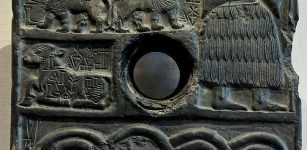 Babylonian Story Of Bird-God Anzu ‘The Wise One’ And His Underworld Realm
Featured Stories | Dec 10, 2016
Babylonian Story Of Bird-God Anzu ‘The Wise One’ And His Underworld Realm
Featured Stories | Dec 10, 2016 -
 Obsidian Flake From 45,000-Year-Old Tool Unearthed In Armenia
Archaeology | Jul 18, 2022
Obsidian Flake From 45,000-Year-Old Tool Unearthed In Armenia
Archaeology | Jul 18, 2022 -
 Story Of Uncle Sam – Symbol Of The United States Government
Ancient Symbols | Apr 24, 2017
Story Of Uncle Sam – Symbol Of The United States Government
Ancient Symbols | Apr 24, 2017 -
 Birka Artifacts Shed Light On Vikings’ Daily Life
Artifacts | Jun 24, 2019
Birka Artifacts Shed Light On Vikings’ Daily Life
Artifacts | Jun 24, 2019 -
 Codex Gigas – The Devil’s Bible – Ancient Secrets Of The World’s Largest Book
Artifacts | Jun 15, 2014
Codex Gigas – The Devil’s Bible – Ancient Secrets Of The World’s Largest Book
Artifacts | Jun 15, 2014 -
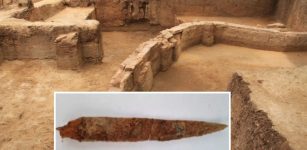 Rare Well-Preserved 2,500-Year-Old Dagger Linked To The Keeladi Civilization Discovered In Tamil Nadu, India
Archaeology | Aug 13, 2021
Rare Well-Preserved 2,500-Year-Old Dagger Linked To The Keeladi Civilization Discovered In Tamil Nadu, India
Archaeology | Aug 13, 2021 -
 Pre-Clovis, Paisley Caves: Archaeologists Identified The Earliest Population Of North America
Archaeology | Jul 16, 2020
Pre-Clovis, Paisley Caves: Archaeologists Identified The Earliest Population Of North America
Archaeology | Jul 16, 2020 -
 Australia’s Two-Meter-Long And Oldest Known Rock Painting Of A Kangaroo – Revealed
News | Feb 23, 2021
Australia’s Two-Meter-Long And Oldest Known Rock Painting Of A Kangaroo – Revealed
News | Feb 23, 2021 -
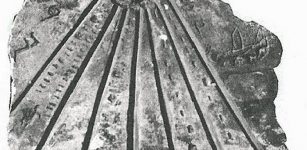 Controversial Davenport And Pontotoc Stele Reveal Ancient Egyptians And Black Africans Visited North America
Civilizations | Jun 27, 2014
Controversial Davenport And Pontotoc Stele Reveal Ancient Egyptians And Black Africans Visited North America
Civilizations | Jun 27, 2014 -
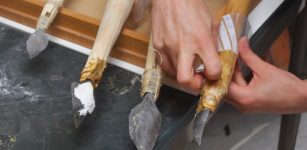 Oldest Known Spearthrowers Found At 31,000-Year-Old Archaeological Site Of Maisières-Canal
Archaeology | Nov 6, 2023
Oldest Known Spearthrowers Found At 31,000-Year-Old Archaeological Site Of Maisières-Canal
Archaeology | Nov 6, 2023 -
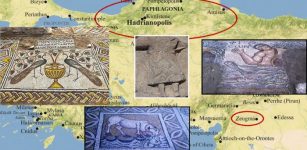 1,800-Year-Old Slab Engraved With Inscription Unearthed In Ruins Of Ancient City Of Hadrianapolis
Archaeology | Jan 5, 2020
1,800-Year-Old Slab Engraved With Inscription Unearthed In Ruins Of Ancient City Of Hadrianapolis
Archaeology | Jan 5, 2020 -
 2.37-Meter Sword And Unusual Shield Mirror Unearthed In Ancient Mound In Japan
Archaeology | Jan 27, 2023
2.37-Meter Sword And Unusual Shield Mirror Unearthed In Ancient Mound In Japan
Archaeology | Jan 27, 2023 -
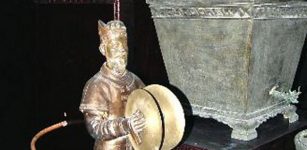 Highly Advanced Robots In Ancient China
Ancient Technology | Aug 7, 2015
Highly Advanced Robots In Ancient China
Ancient Technology | Aug 7, 2015 -
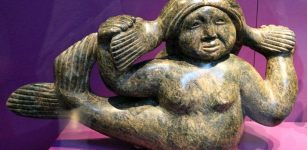 Sedna: Inuit Goddess Sacrificed By Selfish Father Fearing For His Own Life
Featured Stories | Jan 7, 2020
Sedna: Inuit Goddess Sacrificed By Selfish Father Fearing For His Own Life
Featured Stories | Jan 7, 2020 -
 A Painted Vault Lid Discovered In Royal Palace Of Ek’ Balam Will Shed Light On History Of The Acropolis Of Ek’
Archaeology | Sep 16, 2023
A Painted Vault Lid Discovered In Royal Palace Of Ek’ Balam Will Shed Light On History Of The Acropolis Of Ek’
Archaeology | Sep 16, 2023 -
 Neanderthals Had More Children And Lived In Smaller Groups Than Was Previously Thought
Archaeology | May 28, 2019
Neanderthals Had More Children And Lived In Smaller Groups Than Was Previously Thought
Archaeology | May 28, 2019 -
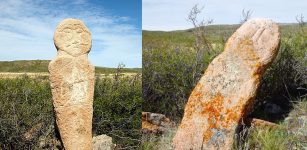 Balbals – Ancient Stone Guards Of The Kazakh Steppe
Artifacts | Dec 21, 2015
Balbals – Ancient Stone Guards Of The Kazakh Steppe
Artifacts | Dec 21, 2015 -
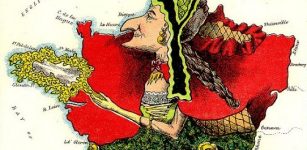 Strangest Maps Ever Created – You Have Never Seen Our World Like This!
Artifacts | Jun 25, 2014
Strangest Maps Ever Created – You Have Never Seen Our World Like This!
Artifacts | Jun 25, 2014 -
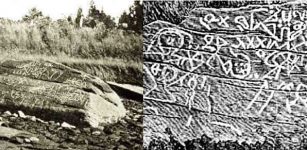 Dighton Rock – Centuries-Old-Mystery Still Unsolved
Featured Stories | Sep 8, 2015
Dighton Rock – Centuries-Old-Mystery Still Unsolved
Featured Stories | Sep 8, 2015 -
 Unsolved Archaeological Mystery Of Ta Prohm Temple, Cambodia
Civilizations | Sep 3, 2018
Unsolved Archaeological Mystery Of Ta Prohm Temple, Cambodia
Civilizations | Sep 3, 2018

